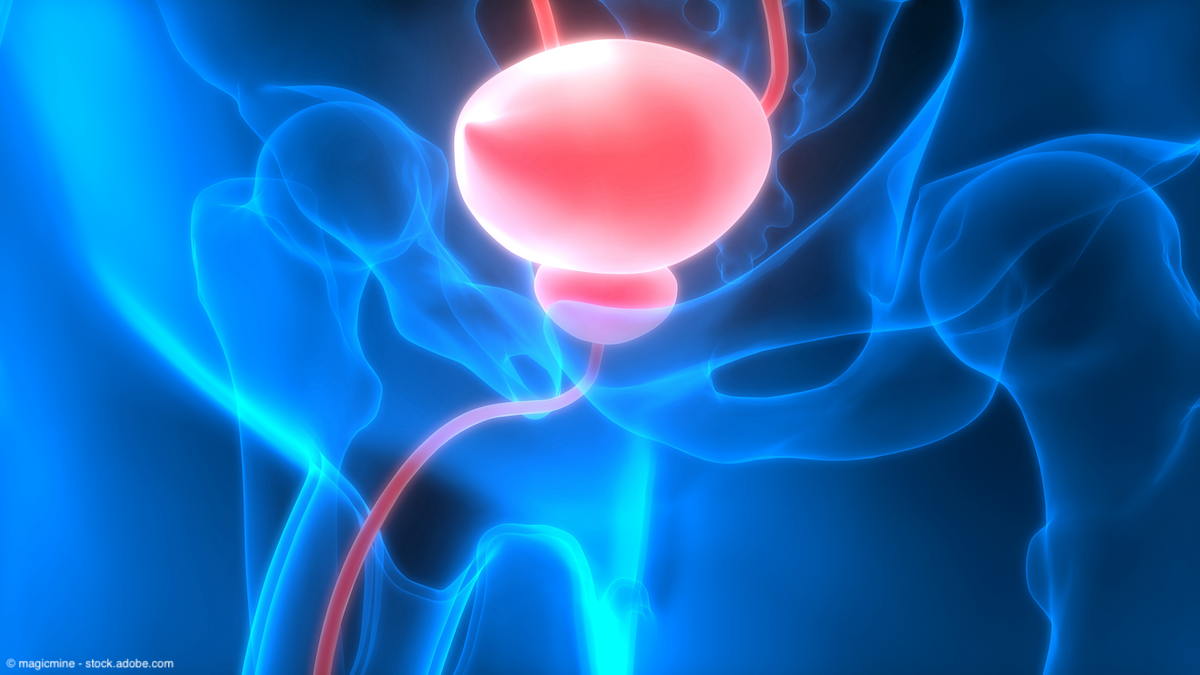Article
Antegrade instillation of UGN-101 for UTUC shows improved safety, similar efficacy, over retrograde
Author(s):
"This is the first data to show that antegrade instillation of UGN-101 had lower ureteral stricture rates compared [with] retrograde approaches,” said Josh Gottlieb, DO.
Antegrade instillation of mitomycin C in reverse thermal hydrogel (UGN-101, Jelmyto) demonstrated a significantly lower rate of ureteral stricture occurrence and no significant difference in oncological efficacy compared with retrograde administration in patients with low-grade upper tract urothelial carcinoma (UTUC).1
A complete response to treatment was achieved in 48% of renal units with retrograde instillations, compared with 60% of renal units with antegrade instillations.

The data were published in European Urology Focus.
“Antegrade instillations of UGN-101 have become increasingly common over the past couple years. One of the main benefits over the retrograde approach is that patients avoid multiple trips to the OR and can receive their treatments in clinic via nephrostomy tubes. This is the first data to show that antegrade instillation of UGN-101 had lower ureteral stricture rates compared [with] retrograde approaches,” said Josh Gottlieb, DO, in correspondence with Urology Times®. Gottlieb is a urologic oncology fellow at Saint John’s Cancer Institute in Santa Monica, California.
For the study, investigators retrospectively evaluated a total of 136 renal units in 132 patients across 15 institutions. Among all units, 78 received retrograde instillations and 58 received antegrade instillations. Chemoablation with UGN-101 was used in 64% of retrograde cases and 45% of antegrade cases. Median follow-up time was 7.4 months.
Data showed that a complete response (CR) to treatment was achieved in 48% of renal units with retrograde instillations, compared with 60% of renal units with antegrade instillations (P = .1). Partial response rate among retrograde renal units was 28%, compared with 32% in antegrade renal units. At a near 8-month median follow-up, no difference in recurrence rates were observed between the 2 groups.
In regard to safety, the overall rate of Clavien-Dindo grade 3 ureteral stricture occurrence was 32% among units with retrograde instillations, compared with 12% among units with antegrade instillations (P < .01). Higher rates of ureteral stricture were observed in the antegrade group both during UGN-101 induction, with 27% in the retrograde group and 3% in the antegrade group (P = .005), as well as at median follow-up.
Other Clavien-Dindo adverse events of grade 3 or higheroccurred in 12% of renal units in each group. In the retrograde cohort, these included acute kidney injury, urosepsis, failure to thrive, cerebrovascular accident, pancytopenia, and pruritis. In the antegrade cohort, these included anemia, severe cystitis, rash, urosepsis, and herpes zoster.
A subgroup analysis was also conducted among patients who had a ureteral tumor (n = 47). Among those patients, 28% were treated with antegrade instillations and 72% were treated with retrograde instillations. Patients treated with follow-up ureteroscopy after UGN-101 in the antegrade group had a CR rate of 62%, compared with 44% in the retrograde group. At median follow-up, 5 patients died, all among those who received retrograde instillations. Of those, only 2 were related to UTUC.
Gottlieb concluded, “More research is needed to further compare oncologic efficacy between instillation techniques, but minimizing anesthesia/surgical risk is always something to strive for.”
Reference
1. Linehan J, Gottlieb J, Woldu SL, et al. Route of administration for UGN-101 and impact on oncological and safety outcomes. Eur Urol Focus. Published online May 30, 2023. Accessed June 1, 2023.doi:10.1016/j.euf.2023.05.012
Newsletter
Stay current with the latest urology news and practice-changing insights — sign up now for the essential updates every urologist needs.













